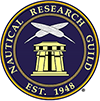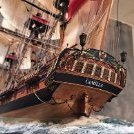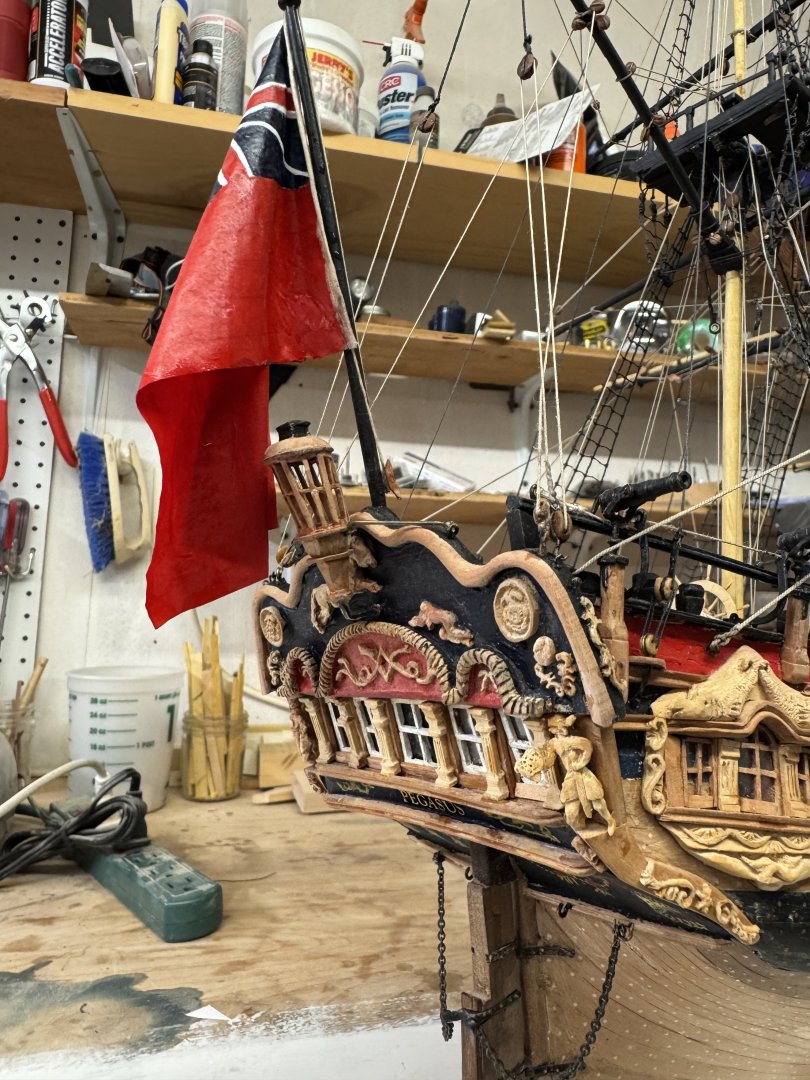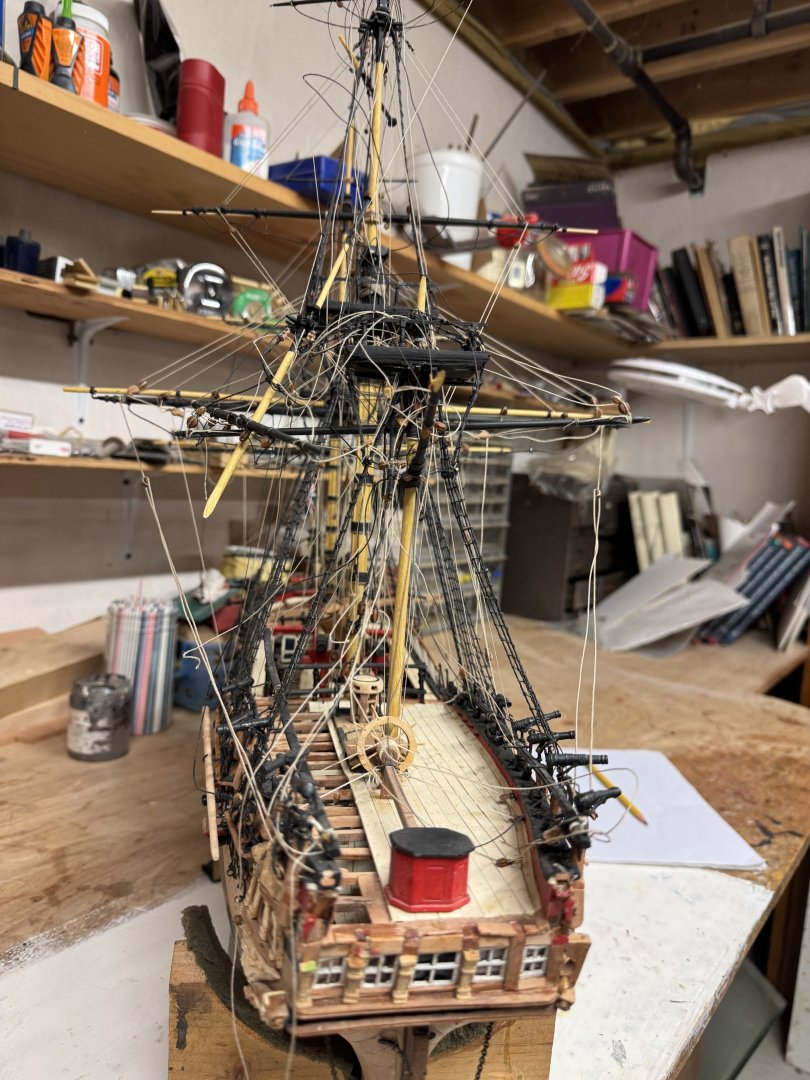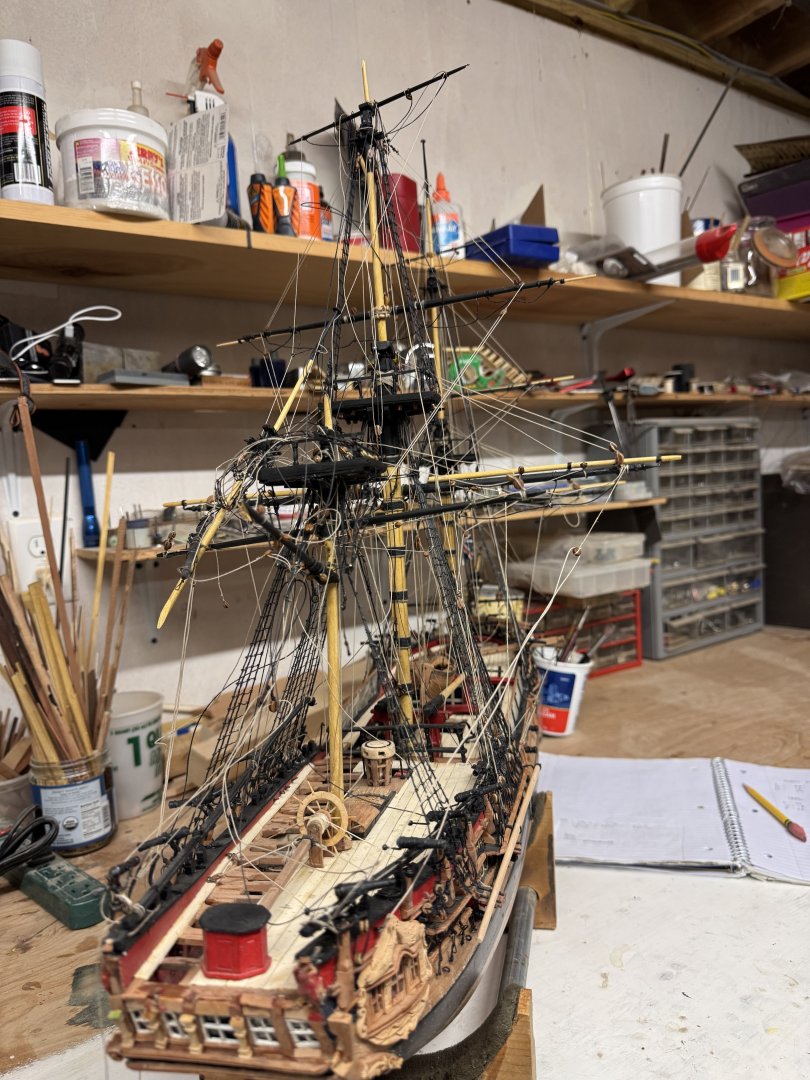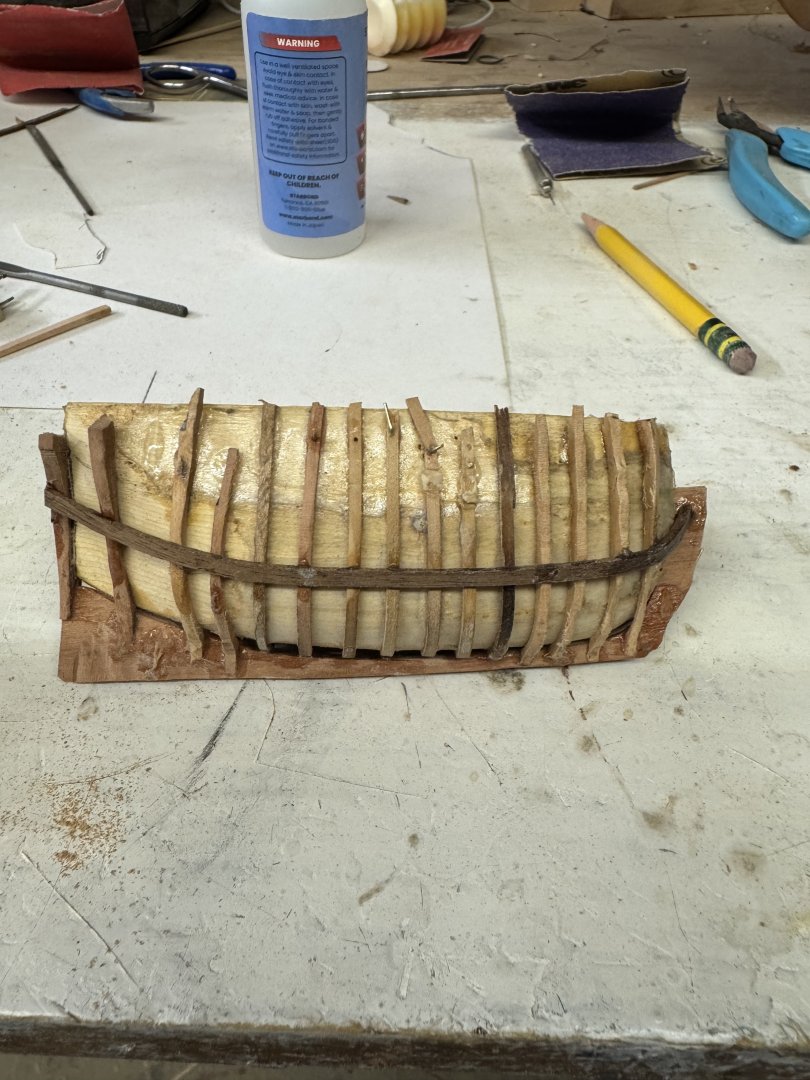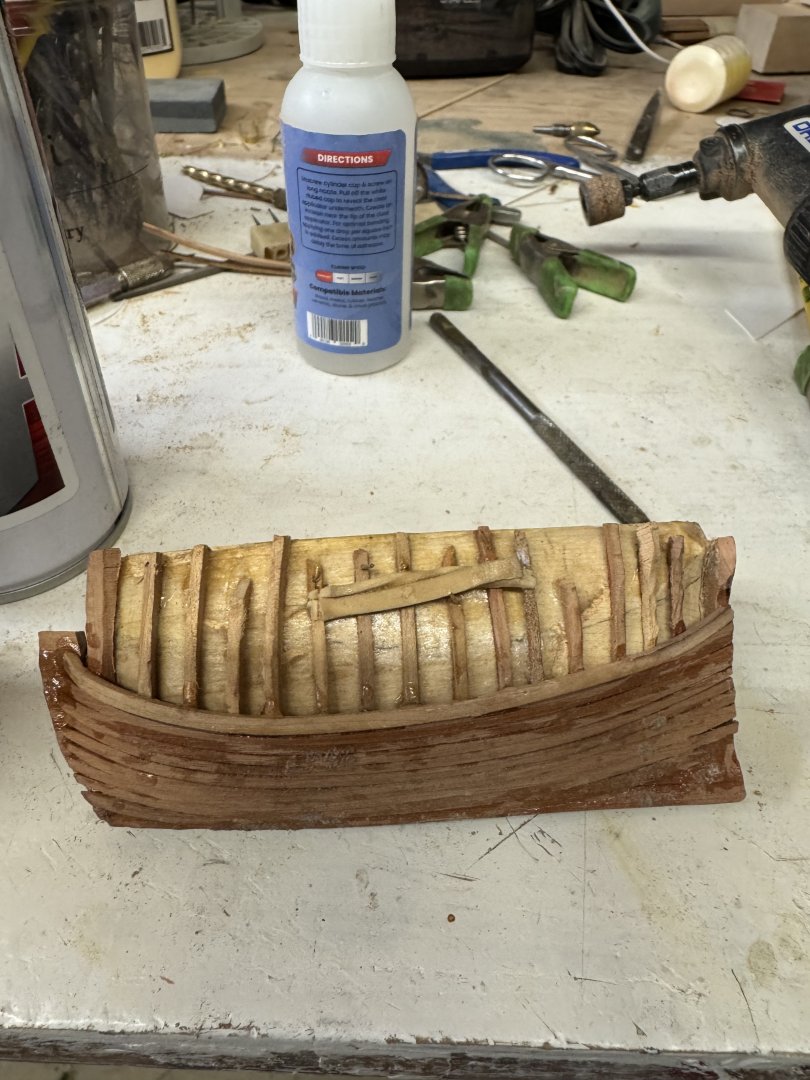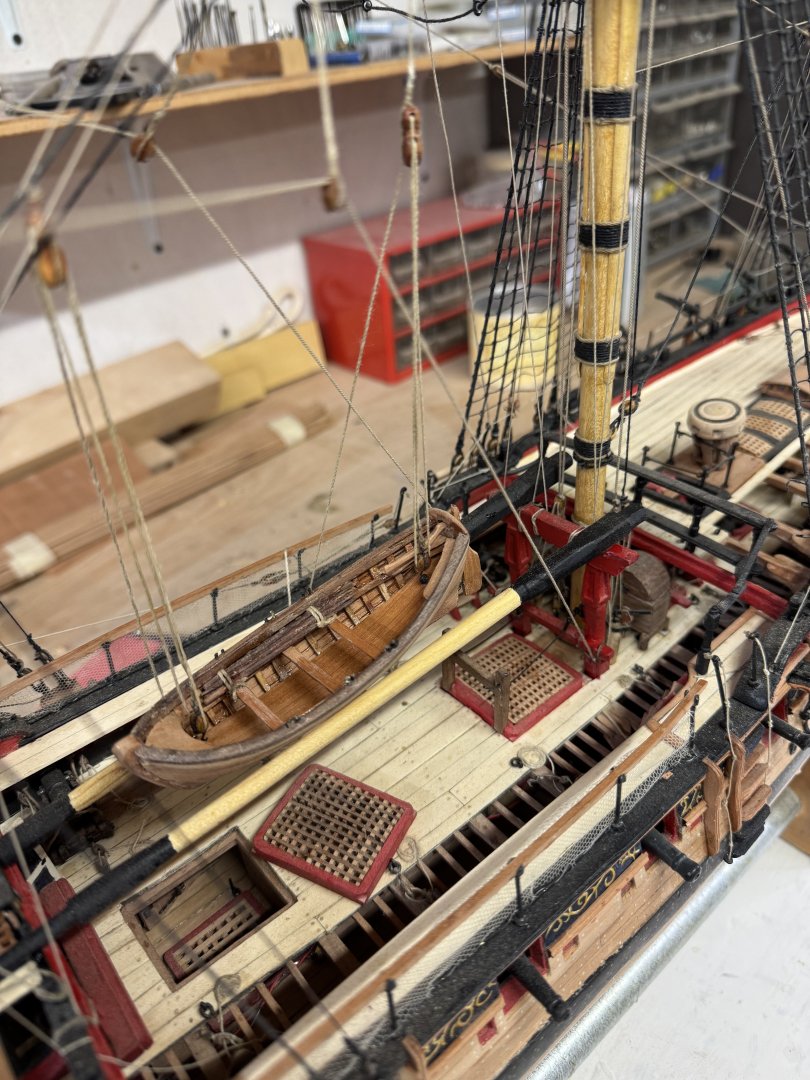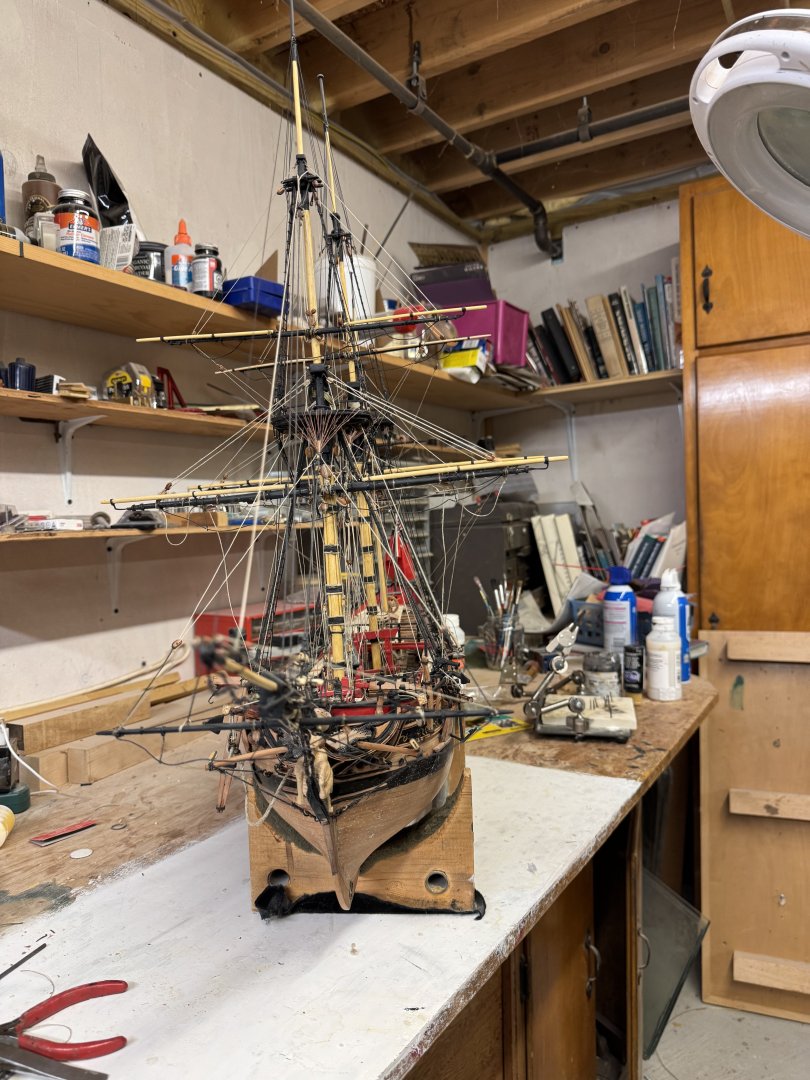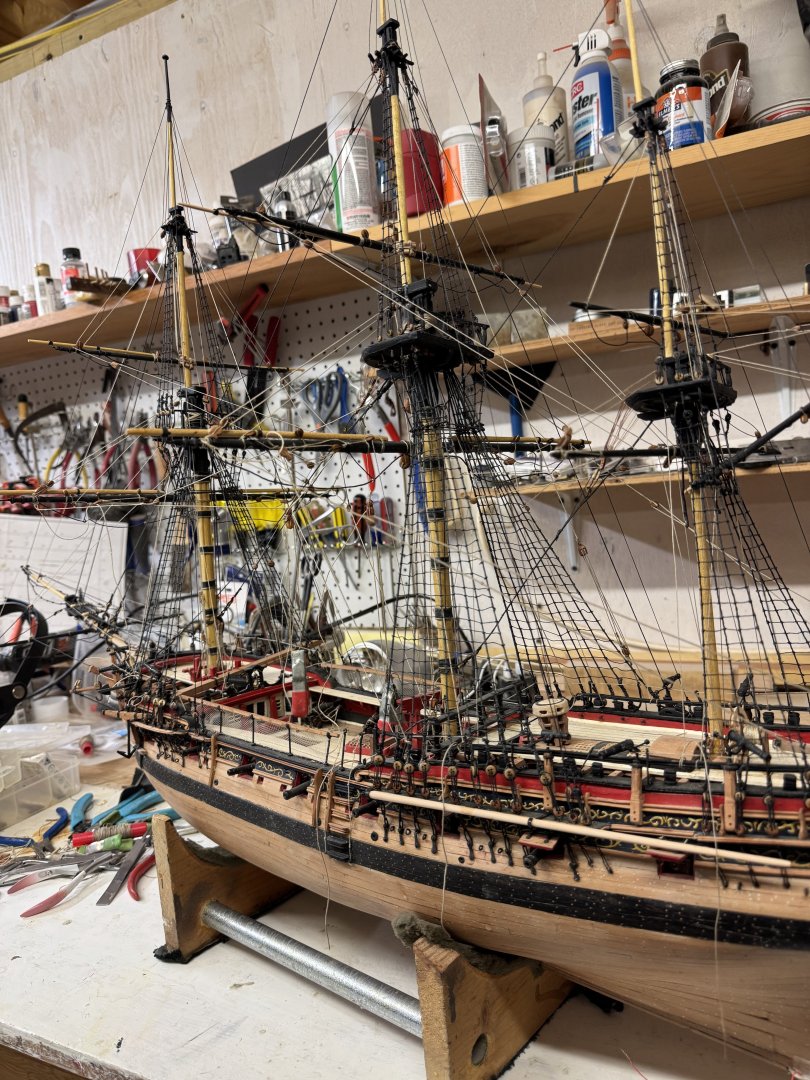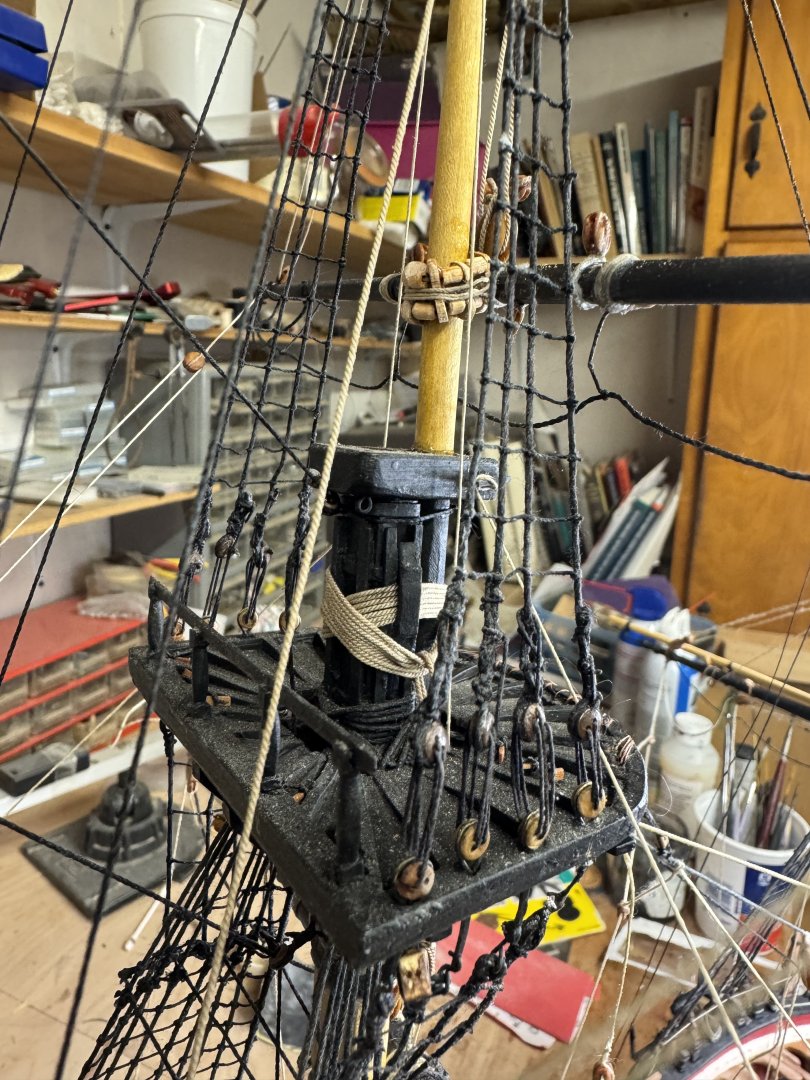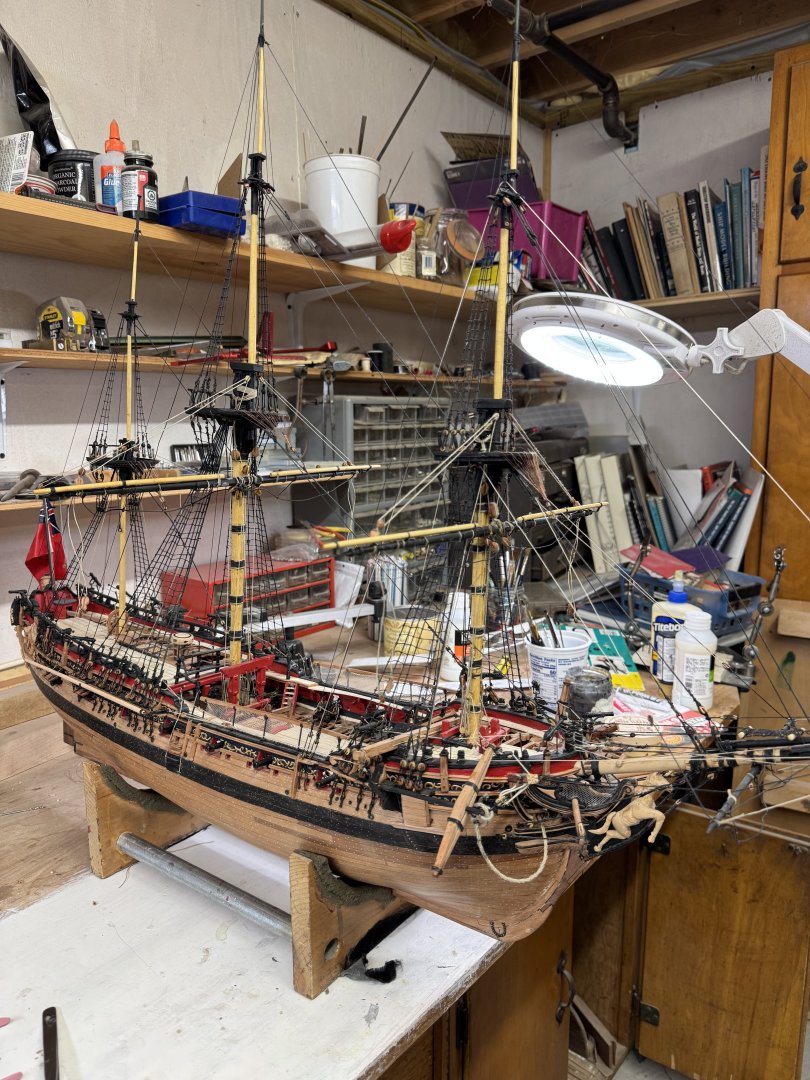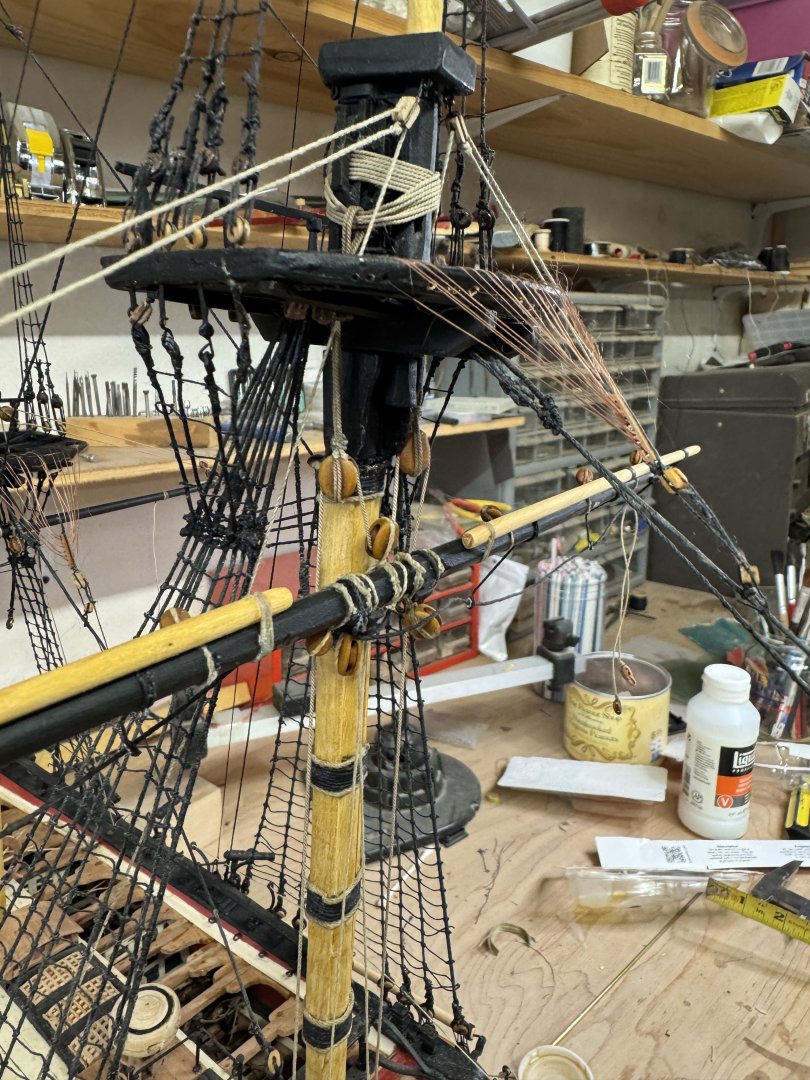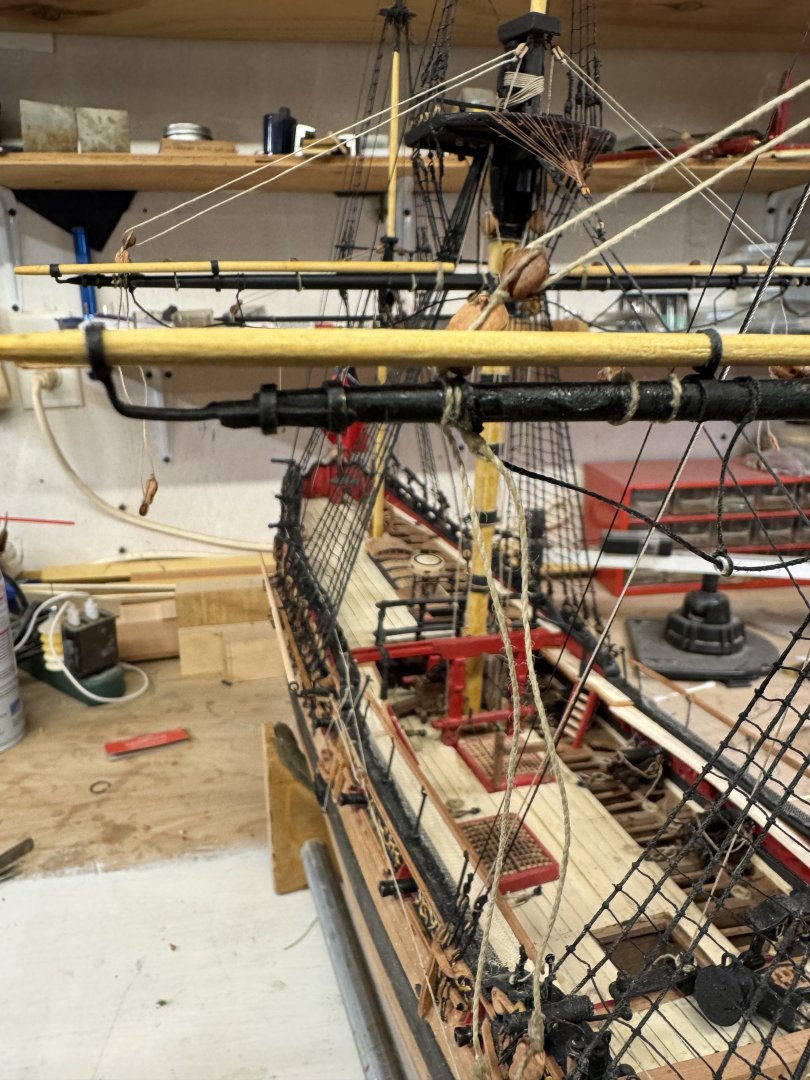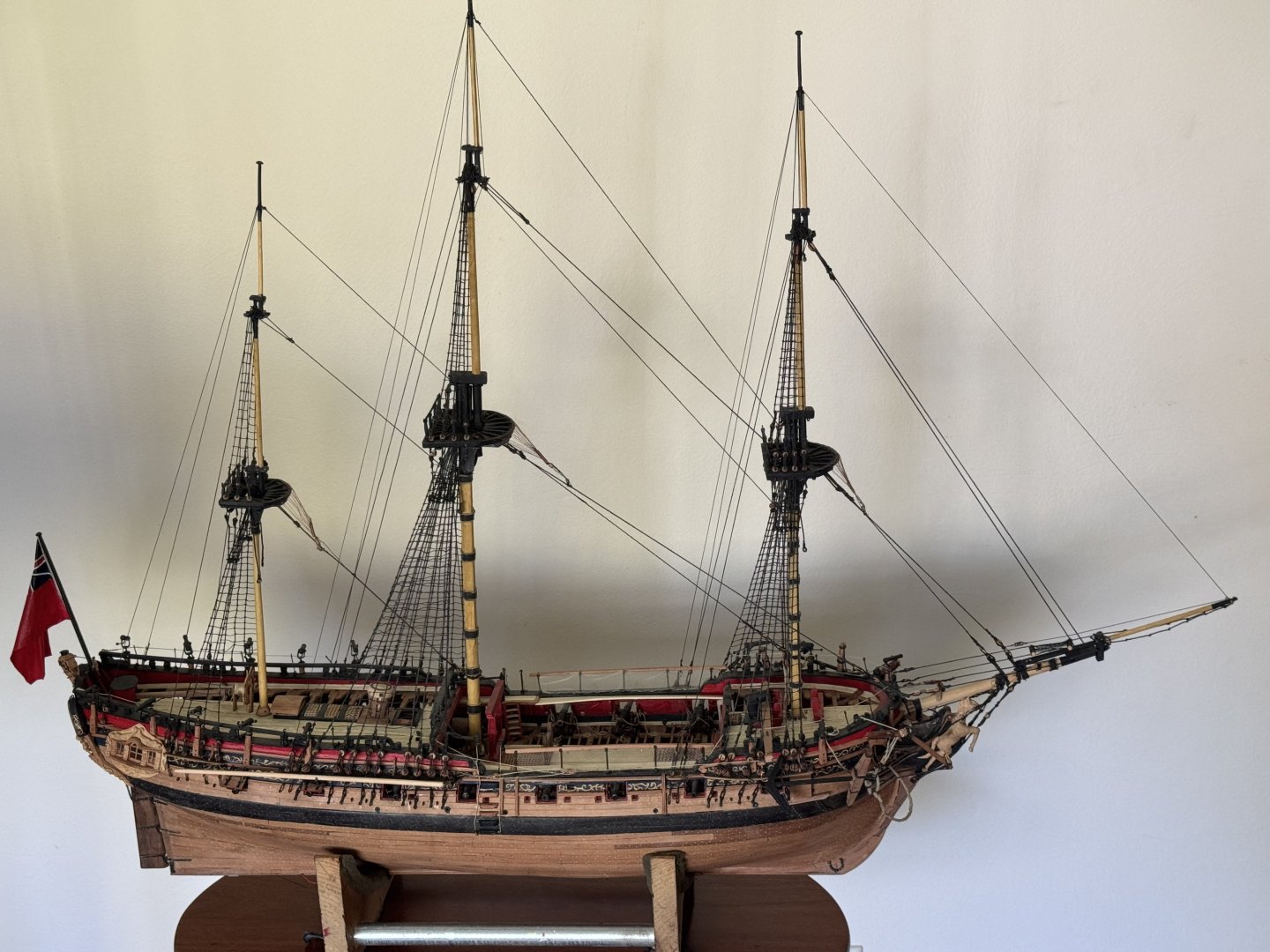
hdrinker
NRG Member-
Posts
232 -
Joined
-
Last visited
About hdrinker
Recent Profile Visitors
-
She’s coming along! Nice. I like the white deck framing. Makes that really pop. I have a grandson who’s handy with a 3-D printer and was happy to print me up a ring in black for that capston. Henry
- 1,126 replies
-
 mtbediz reacted to a post in a topic:
USS Constitution by mtbediz - 1:76
mtbediz reacted to a post in a topic:
USS Constitution by mtbediz - 1:76
-
USS Constitution by mtbediz - 1:76
hdrinker replied to mtbediz's topic in - Build logs for subjects built 1751 - 1800
The work you are doing is truly inspiring, Mustafa. I have always wanted to do a model of this iconic vessel, having visited her many times over my lifetime. You have inspired me to now think seriously about it. Where would I find original framing plans and deck layouts? Henry -
 JacquesCousteau reacted to a post in a topic:
Pegasus by hdrinker - FINISHED - 1:48 - POF - Swan practicum
JacquesCousteau reacted to a post in a topic:
Pegasus by hdrinker - FINISHED - 1:48 - POF - Swan practicum
-
 dvm27 reacted to a post in a topic:
Pegasus by hdrinker - FINISHED - 1:48 - POF - Swan practicum
dvm27 reacted to a post in a topic:
Pegasus by hdrinker - FINISHED - 1:48 - POF - Swan practicum
-
 cotrecerf reacted to a post in a topic:
Pegasus by hdrinker - FINISHED - 1:48 - POF - Swan practicum
cotrecerf reacted to a post in a topic:
Pegasus by hdrinker - FINISHED - 1:48 - POF - Swan practicum
-
 Knocklouder reacted to a post in a topic:
Pegasus by hdrinker - FINISHED - 1:48 - POF - Swan practicum
Knocklouder reacted to a post in a topic:
Pegasus by hdrinker - FINISHED - 1:48 - POF - Swan practicum
-
 druxey reacted to a post in a topic:
Pegasus by hdrinker - FINISHED - 1:48 - POF - Swan practicum
druxey reacted to a post in a topic:
Pegasus by hdrinker - FINISHED - 1:48 - POF - Swan practicum
-
 Desertanimal reacted to a post in a topic:
Pegasus by hdrinker - FINISHED - 1:48 - POF - Swan practicum
Desertanimal reacted to a post in a topic:
Pegasus by hdrinker - FINISHED - 1:48 - POF - Swan practicum
-
 ccoyle reacted to a post in a topic:
Pegasus by hdrinker - FINISHED - 1:48 - POF - Swan practicum
ccoyle reacted to a post in a topic:
Pegasus by hdrinker - FINISHED - 1:48 - POF - Swan practicum
-
 scrubbyj427 reacted to a post in a topic:
Pegasus by hdrinker - FINISHED - 1:48 - POF - Swan practicum
scrubbyj427 reacted to a post in a topic:
Pegasus by hdrinker - FINISHED - 1:48 - POF - Swan practicum
-
 scrubbyj427 reacted to a post in a topic:
Pegasus by hdrinker - FINISHED - 1:48 - POF - Swan practicum
scrubbyj427 reacted to a post in a topic:
Pegasus by hdrinker - FINISHED - 1:48 - POF - Swan practicum
-
- 257 replies
-
- pegasus
- Swan-class
-
(and 1 more)
Tagged with:
-
- 257 replies
-
- pegasus
- Swan-class
-
(and 1 more)
Tagged with:
-
I was bringing Pegasus up from the shop for some proper photos and tripped. Down she went. What a mess! Landed stern first, shearing off the taffrail, light, mizzen gaff (broke). Mizzen topmast, main T’gallant mast and fore T’gallant masts broken. Luckily, the bow was undamaged, including the figurehead and bow sprit. No damage to any of the carvings, all of which were simply repositioned on the repaired raff rail, which by dinner, was back in place with a couple of improvements. Starboard mizzen chains will need to be redone. The rest will be easier. My wife was a witness and was much more upset than I was.
- 257 replies
-
- pegasus
- Swan-class
-
(and 1 more)
Tagged with:
-
Many thanks for the kind words. I’m awaiting delivery of piece of wood for a base and the use of a regular sized lathe of friend to shape a pair of brass pedestals before taking final photos. Henry
- 257 replies
-
- pegasus
- Swan-class
-
(and 1 more)
Tagged with:
-
With the topgallant rigging complete, attention was directed to the ship’s boat. I had a plug left over from the same task on the Gros Vendre build, so that was shortened and the stern modified. Midship frames were dry steam bent and the rest sawn with the lot glued to the keel with.CA. I used Swiss Pear for the bulk of it, with the shear and cap in Walnut. It was then glued amidships to the spare top masts and rigged to the mainstay pendant tackles. That pretty much concludes the build except for repairs, dusting and paint touch up here and there. Final photos to follow.
- 257 replies
-
- pegasus
- Swan-class
-
(and 1 more)
Tagged with:
-
- 257 replies
-
- pegasus
- Swan-class
-
(and 1 more)
Tagged with:
-
- 257 replies
-
- pegasus
- Swan-class
-
(and 1 more)
Tagged with:
-
- 257 replies
-
- pegasus
- Swan-class
-
(and 1 more)
Tagged with:
-
Having completed the lower yards and mizzen gaff rigging, it’s on to the topsail yards. Nothing particularly complicated about this, but to get the details right, a lot of time and fuss. It’s a pleasure, tho, to see it come alive.
- 257 replies
-
- pegasus
- Swan-class
-
(and 1 more)
Tagged with:
-
- 257 replies
-
- pegasus
- Swan-class
-
(and 1 more)
Tagged with:
-
I like your practice of pinning the gun carriages to the deck. I’ve just used glue under the wheels, but no matter what type of glue I use, they seems to come lose all too often, which creates a super headache particularly under a planked deck! I also pin the trunion caps, with glued pins, but have had the same issue. Henry
- 1,126 replies
-
- 257 replies
-
- pegasus
- Swan-class
-
(and 1 more)
Tagged with:
About us
Modelshipworld - Advancing Ship Modeling through Research
SSL Secured
Your security is important for us so this Website is SSL-Secured
NRG Mailing Address
Nautical Research Guild
237 South Lincoln Street
Westmont IL, 60559-1917
Model Ship World ® and the MSW logo are Registered Trademarks, and belong to the Nautical Research Guild (United States Patent and Trademark Office: No. 6,929,264 & No. 6,929,274, registered Dec. 20, 2022)
Helpful Links
About the NRG
If you enjoy building ship models that are historically accurate as well as beautiful, then The Nautical Research Guild (NRG) is just right for you.
The Guild is a non-profit educational organization whose mission is to “Advance Ship Modeling Through Research”. We provide support to our members in their efforts to raise the quality of their model ships.
The Nautical Research Guild has published our world-renowned quarterly magazine, The Nautical Research Journal, since 1955. The pages of the Journal are full of articles by accomplished ship modelers who show you how they create those exquisite details on their models, and by maritime historians who show you the correct details to build. The Journal is available in both print and digital editions. Go to the NRG web site (www.thenrg.org) to download a complimentary digital copy of the Journal. The NRG also publishes plan sets, books and compilations of back issues of the Journal and the former Ships in Scale and Model Ship Builder magazines.

